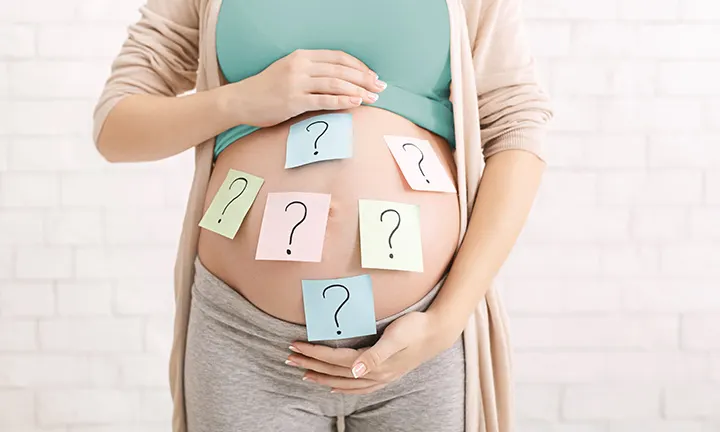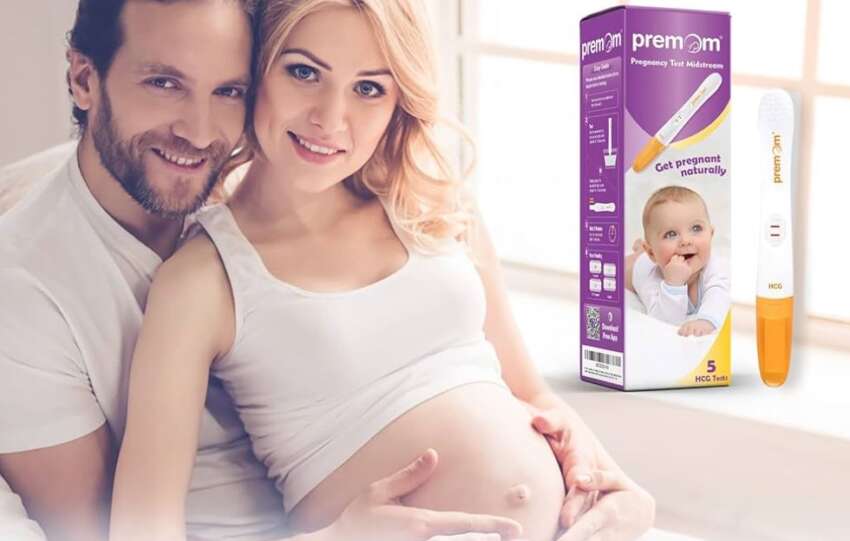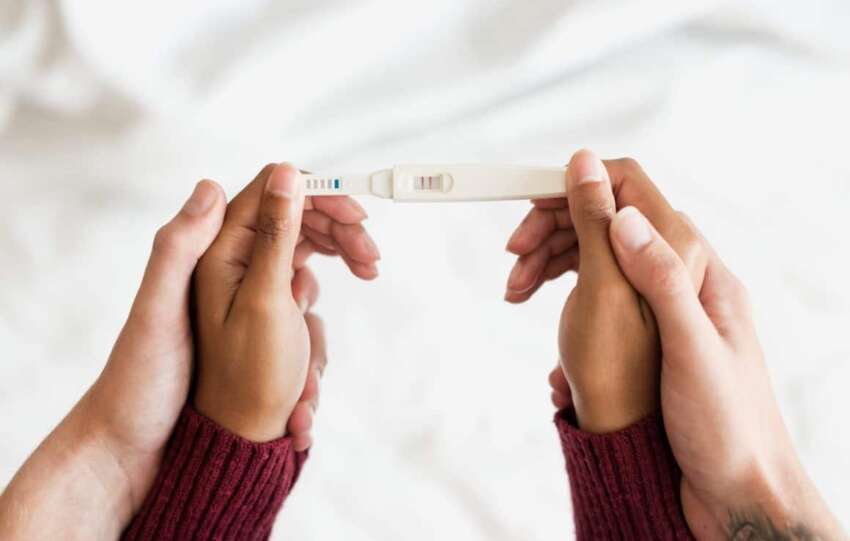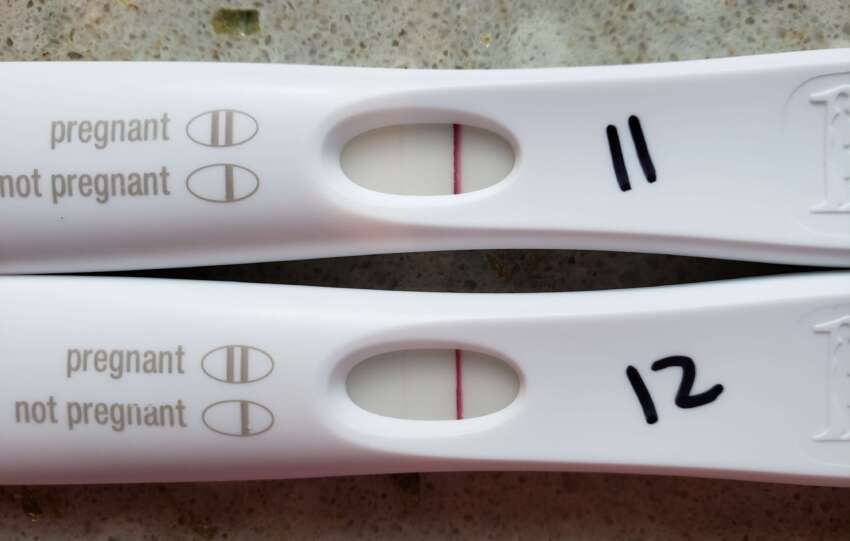For couples trying to conceive, timing and preparation are key. While no sex position guarantees pregnancy, some may help sperm reach the egg more effectively. Here’s a quick summary of what you need to know:
- Best Positions for Conception: Missionary, rear entry, side-lying, elevated hips, and modified woman-on-top can support deeper penetration and sperm movement.
- Timing Matters: Focus on your fertile window – the five days leading up to ovulation and the day of ovulation itself.
- Post-Sex Tips: Lying down for 10–15 minutes after intercourse may help sperm travel toward the cervix.
- Lifestyle Changes: Manage stress, track ovulation, and use fertility-friendly lubricants for better chances.
- When to Seek Help: If you’re under 35 and haven’t conceived after a year (or six months if over 35), consult a fertility specialist.
Quick Comparison of Key Factors
| Factor | Impact on Conception |
|---|---|
| Timing | Fertile window: 5 days before ovulation + ovulation day |
| Sperm Survival | Up to 5 days |
| Egg Viability | 12–24 hours |
| Optimal Sex Frequency | Every 2–3 days during fertile window |
| Post-Sex Positioning | Lying down for 10–15 minutes |
Focus on timing, health, and comfort during your conception journey. If challenges persist, don’t hesitate to seek expert advice.
How Conception Works
Understanding how conception happens can boost your chances of getting pregnant. Timing is everything – having intercourse during your fertile window and ensuring conditions are right for sperm to meet the egg are key. Let’s break it down.
Tracking Your Fertile Days
Your fertile window includes the five days leading up to ovulation and the day of ovulation itself. The two days right before ovulation are when your chances of conception are highest[3]. For someone with a 28-day cycle, ovulation typically happens around day 14.
“The best time to get pregnant is at the most fertile point in your menstrual cycle. Your ‘fertile window’ includes five days prior to ovulation and the day of ovulation.” – Stephanie Watson, Healthline Writer[3]
To track these fertile days, you can:
- Observe your vaginal discharge – look for clear, stretchy mucus.
- Measure basal body temperature daily – a slight rise can indicate ovulation.
- Use ovulation prediction kits for accuracy.
- Keep a calendar of your cycle to identify patterns.
Sperm’s Journey to the Egg
Conception starts when sperm enters the reproductive tract. Sperm can reach the cervix within 15 minutes after ejaculation[3]. Cervical mucus plays a key role here, creating a supportive environment that helps sperm survive for up to five days[2].
The American College of Obstetricians and Gynecologists (ACOG) highlights the importance of timing:
“Timing intercourse around ovulation gives couples the best shot at getting pregnant.” – American College of Obstetricians and Gynecologists (ACOG)[4]
Once an egg is released, it stays viable for just 12–24 hours. If sperm is already in the fallopian tubes when ovulation occurs, the chances of fertilization are much higher. That’s why regular intercourse during the fertile window is strongly recommended[4].
Here’s a quick breakdown of key timing factors:
| Timing Factor | Duration | Impact on Conception |
|---|---|---|
| Sperm Survival | Up to 5 days | Allows conception even if intercourse happens early |
| Egg Viability | 12–24 hours | Creates a narrow window for fertilization |
| Optimal Period | 2 days before ovulation + day of ovulation | Maximizes chances of fertilization |
5 Sex Positions for Conception
When trying to conceive, timing and sperm’s journey to the egg are key factors. Certain positions during intercourse may help sperm get closer to the cervix, potentially improving your chances. Here are five positions often suggested by fertility experts:
1. Missionary Position
This classic position is especially helpful for women with a forward-tilted uterus, which is common in about two-thirds of women. It uses gravity to align the cervix, making it easier for sperm to move in the right direction [1].
Tip: Place a pillow under your hips to create an angle that may further aid sperm movement.
2. Rear Entry Position
Known as the “doggy style” position, this allows for deeper penetration, which may help place sperm closer to the cervix [1].
3. Side-Lying Position
This position offers comfort while keeping the cervix accessible. Feeling relaxed during intercourse can be important when trying to conceive.
4. Elevated Hips Position
This is a variation of the missionary position where the hips are raised using pillows or a wedge. Elevating the hips may help create a better angle for sperm to reach the cervix.
5. Modified Woman-on-Top
For women with a retroverted uterus (around 25% of women), this position can be more suitable. It allows for adjustments in angle and depth, accommodating different anatomies.
Focus on positions that feel natural and comfortable for you both, especially during your fertile window. Up next, learn about additional ways to support your conception journey.
Ways to Improve Conception Chances
In addition to choosing favorable positions, small lifestyle tweaks can make a difference when trying to conceive.
Lying Down After Sex
Staying horizontal for a short time after intercourse might help sperm move toward the egg more effectively. Dr. John J. Rapisarda from Fertility Centers of Illinois notes:
“Laying down for 15 minutes after sex can help keep sperm going in the right direction by giving them some extra time – thus increasing the possibility of pregnancy” [5].
Elevating Your Hips
During this 10–15 minute rest, you can try these techniques:
- Place a firm pillow under your hips.
- Prop your legs up against a wall.
- Use a fertility wedge or cushion to achieve a supportive angle.
Timing and Frequency of Intercourse
To maximize your chances, use an ovulation predictor kit (OPK) to identify your most fertile days. Intercourse on ovulation day or the two days leading up to it can boost your chances to around 30% [7]. Sperm can survive for 3–5 days, while an egg remains viable for only 12–24 hours [6]. A positive OPK result usually signals ovulation within 24–36 hours [7].
Choosing Fertility-Friendly Lubricants
The type of lubricant you use matters. Many standard lubricants can slow down sperm movement, so it’s best to select products designed for fertility. Below are some options:
| Lubricant Name | Rating | Key Features |
|---|---|---|
| Natalist The Lube | 5/5 stars | Balanced texture, not overly slippery |
| Fairhaven Health BabyDance | 4/5 stars | FDA-cleared, mimics cervical mucus |
| Conceive Plus | 4/5 stars | Hydroxyethylcellulose-based formula |
Avoid regular lubricants, saliva, or household oils, as these can hinder sperm movement [9]. Look for products labeled “fertility-friendly” and approved by the FDA [8].
Health and Stress Management
Your overall health and stress levels can significantly impact fertility. Track your cycle using tools like ovulation apps, monitor cervical mucus changes, or chart your basal body temperature. Combining these methods can improve accuracy [6]. Regular intercourse every 2–3 days throughout your cycle can also help ensure you don’t miss your fertile window [7].
sbb-itb-a1a8504
Common Conception Myths
When trying to conceive, many couples come across myths about sex positions and their influence on pregnancy. Let’s break down these misconceptions and focus on what truly matters.
Do Positions Make a Difference?
There’s no scientific proof that any specific sex position increases your chances of conceiving. Research shows no position is more effective for improving fertility rates [10].
“There is no scientific data supporting that claim.” – Kelly Pagidas, MD, fertility specialist with the Women & Infants Center for Reproduction and Infertility in Providence [2]
While some positions might allow deeper penetration, it doesn’t make a big difference. Sperm are incredibly efficient, reaching the cervical canal within seconds of ejaculation [10].
Orgasms and Fertility
The idea that orgasms boost pregnancy chances isn’t backed by conclusive research. While uterine contractions during orgasm can feel pleasant, their direct impact on conception remains unclear. However, enjoying intimacy and reducing stress can positively influence the process [11].
| Sperm Journey Milestones | Timeframe |
|---|---|
| Reaching the cervical canal | Seconds |
| Reaching the fallopian tubes | 2–10 minutes |
| Surviving in the reproductive tract | Up to 3 days |
Does Gravity Play a Role?
Another myth suggests gravity significantly impacts sperm movement and conception. The truth? Sperm are strong swimmers and don’t rely on gravity to reach their destination [12].
“Sperm are capable of beginning their journey toward the fallopian tubes almost immediately after ejaculation, and gravity or specific sexual positions don’t significantly impact their ability to get where they need to go.” – Positive Steps Fertility [12]
Some key facts about sperm movement:
- They can swim against gravity [11].
- Angling or adjusting positions during intercourse doesn’t meaningfully change conception odds [12].
Instead of focusing on positions, paying attention to timing and overall health is far more effective.
Getting Medical Support
When to See a Doctor
Knowing when to consult a doctor can make a big difference for couples trying to conceive. Age is a key factor in deciding when to seek help from a fertility specialist:
| Age Group | Seek Help After |
|---|---|
| Under 35 | 1 year of trying |
| 35–39 | 6 months of trying |
| 40 and over | Immediate evaluation |
“No matter if you have been actively trying or not, couples having unprotected sexual intercourse for more than 6 or 12 months, depending on age, without conceiving should seek a fertility evaluation.” – Dr. Jason Bromer, M.D. [13]
Getting evaluated early is especially important if there are warning signs of fertility issues.
Fertility Warning Signs
Spotting potential fertility problems early can save time and stress. In the U.S., about 12% of women aged 15 to 44 struggle with getting pregnant or carrying a pregnancy to term [15].
For women, signs to watch for include:
- Irregular or missing periods
- Heavy or painful periods
- Sudden hormonal changes, like unexpected acne or unusual hair growth/loss
- Pain during intercourse that doesn’t go away
For men, keep an eye on:
- Issues with sexual function or libido
- Swelling or pain in the testicles
- Trouble with erection or ejaculation
If these symptoms appear, it’s worth exploring testing and treatment options.
Fertility Tests and Treatments
Today’s fertility medicine offers a range of tests and treatments. Since male factor infertility accounts for 30–40% of conception challenges [14], both partners should be evaluated.
| Treatment Category | Examples |
|---|---|
| Fertility Medications | Clomiphene citrate, Gonadotropins, Metformin |
| Surgical Solutions | Laparoscopic surgery, Tubal procedures |
| Assisted Reproduction | Intrauterine insemination (IUI), In vitro fertilization (IVF) |
Different treatments come with varying success rates. For example:
- Oral medications have less than a 10% chance of resulting in multiple pregnancies.
- Injectable medications increase that chance to up to 30% [16].
A fertility specialist can guide you in choosing the most suitable option.
Summary
Conception depends on timing, position, and overall health. Research highlights several factors that play a role in fertility:
| Factor | Impact on Conception |
|---|---|
| Age (20s–early 30s) | 25–30% chance per cycle |
| Age (40+) | Less than 10% chance per cycle |
| Sperm Travel Time | Can reach the fallopian tubes in 5 minutes |
| Egg Viability | 24–48 hours after ovulation |
| Sperm Survival | Up to 72 hours in optimal conditions |
These figures emphasize how each element contributes to the process. Dr. Sherry Ross, MD, shares:
“Since the cervix is the gateway into the uterus and fallopian tube, it would make sense to have the sperm as close as possible to the cervix to help it swim up towards the eggs.” [1]
To improve your chances of conception:
- Timing and position: Engage in regular intercourse during the fertile window, using positions that encourage deeper penetration.
- Health: Focus on a balanced lifestyle with good nutrition, regular exercise, and stress.
Dr. Jani Jensen, a reproductive endocrinologist at Mayo Clinic, notes:
“Studies about frequency of sex, there wasn’t a statistical difference between rates of pregnancy for people who have intercourse every other day leading up to ovulation and those who do it every day… Besides, trying to have it daily can be a huge chore.” [2]
If you’re under 35 and haven’t conceived after a year – or after six months if you’re over 35 – it’s a good idea to consult a fertility specialist. They can provide tailored advice and help identify any potential issues early.





